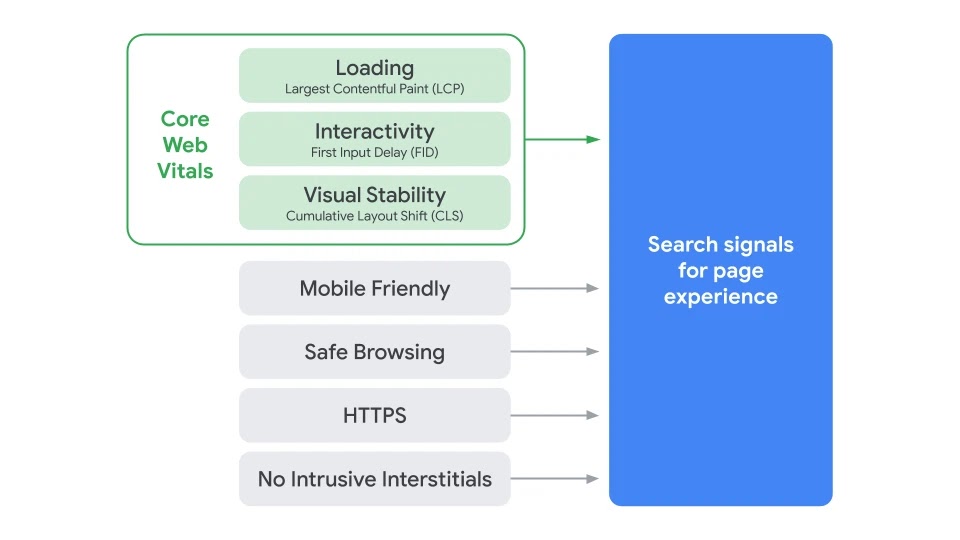Google to Introduce A New Ranking Signal – ‘Page Experience’
June 12, 2020
Article Overview
10min read
Google is introducing a new ranking signal called ‘Page Experience’, to measure the user experience (UX) of individual pages. The number of ranking factors related to UX performance that includes the Core Web Vitals ( that was rolled out last month) is combined into a single ranking signal, to measure the overall quality of user experience on a web page.
However, this new ranking signal is in the early stages of development and is not scheduled to launch until at least next year. But to help site owners prepare, Google has provided an early look at the work being done so far.
The New ‘Page Experience’
Known as the page experience signal, the upcoming ranking signal consists of the Core Web Vitals, as well as some existing page experience metrics such as:
- Mobile-friendliness
- Safe-browsing
- HTTPS-security
- Intrusive interstitial guidelines
Google points out that the page experience signal measures facets of how users identify the experience of interacting with a web page. It takes these existing signals and combines them with Core Web Vitals, “a set of real-world, user-centered metrics that quantify key aspects of the user experience.” Optimizing these factors makes the web more compatible for users across all web browsers and surfaces. It also helps websites change towards user expectations on mobile.
Core Web Vitals
Core Web Vitals, the subset of Web Vitals that apply to all web pages, was introduced earlier in May, 2020. Even though the metrics that make up Core Web Vitals will evolve over time, the current set for 2020 focuses specifically on three aspects of UX:
- Page load time
- Interactivity
- Visual stability
All these aspects will be surfaced across all Google tools and they should be measured by all site owners. Each of the Core Web Vitals represents a distinct aspect of the UX, which reflects the real-world experience of a critical user-centric outcome. Along with these aspects, Google has included the following metrics (and their respective thresholds):
- Largest Contentful Paint (LCP): It measures loading performance, that is, the time it takes for a page’s main content to load. Ideally, LCP should occur within 2.5 seconds of when the page first starts loading or faster.
- First Input Delay (FID): It measures interactivity. To provide a good user experience, pages should have an ideal measurement of FID of less than 100 milliseconds.
- Cumulative Layout Shift (CLS): It measures visual stability. Here, pages should maintain a CLS of less than 0.1 to provide a good user experience.
If these metrics changes, Google will certainly update the public.
Why Is This Update So Important?
With this update, Google aims to help more site owners to build pages that users enjoy visiting. This is done by adding Core Web Vitals as ranking factors and combining them with other user experience signals.
For instance, based on the page’s experience signal Google determines that a page is providing a high-quality UX, then it will likely rank the page at the top of the search results. However, along with page experience signals, content relevance is also still considerably important when it comes to rankings. That is, a page with content that’s highly relevant to a query could possibly rank well, whether or not if it had a poor page experience signal. And if there are two pages both providing outstanding content, then the one with the stronger page experience signal will rank higher in search results.
So optimize your website with both great content and great page experience.
Google plans to put the ranking changes into place sometime in 2021 and the company also plans to add more page experience signals on a yearly basis, believing that incorporating new page experience signals into Search will make the web better for everyone.


 +971 52 312 2506
+971 52 312 2506





